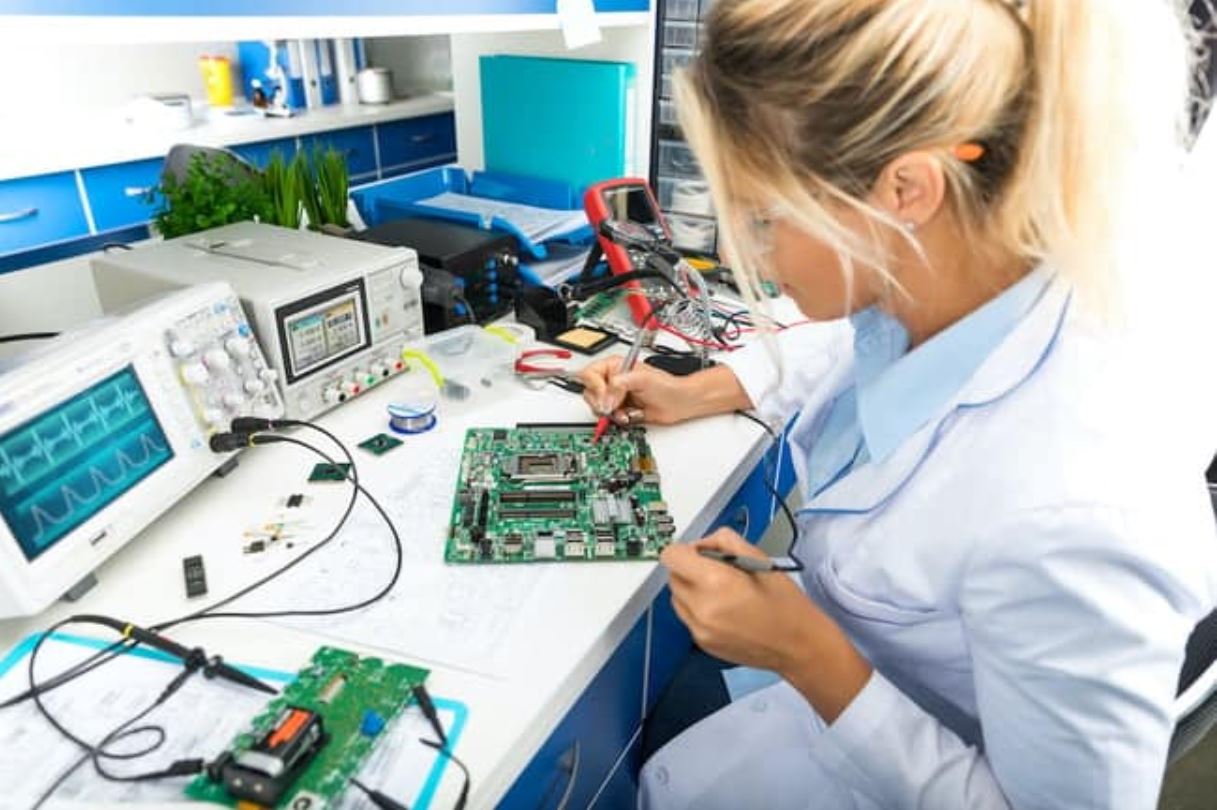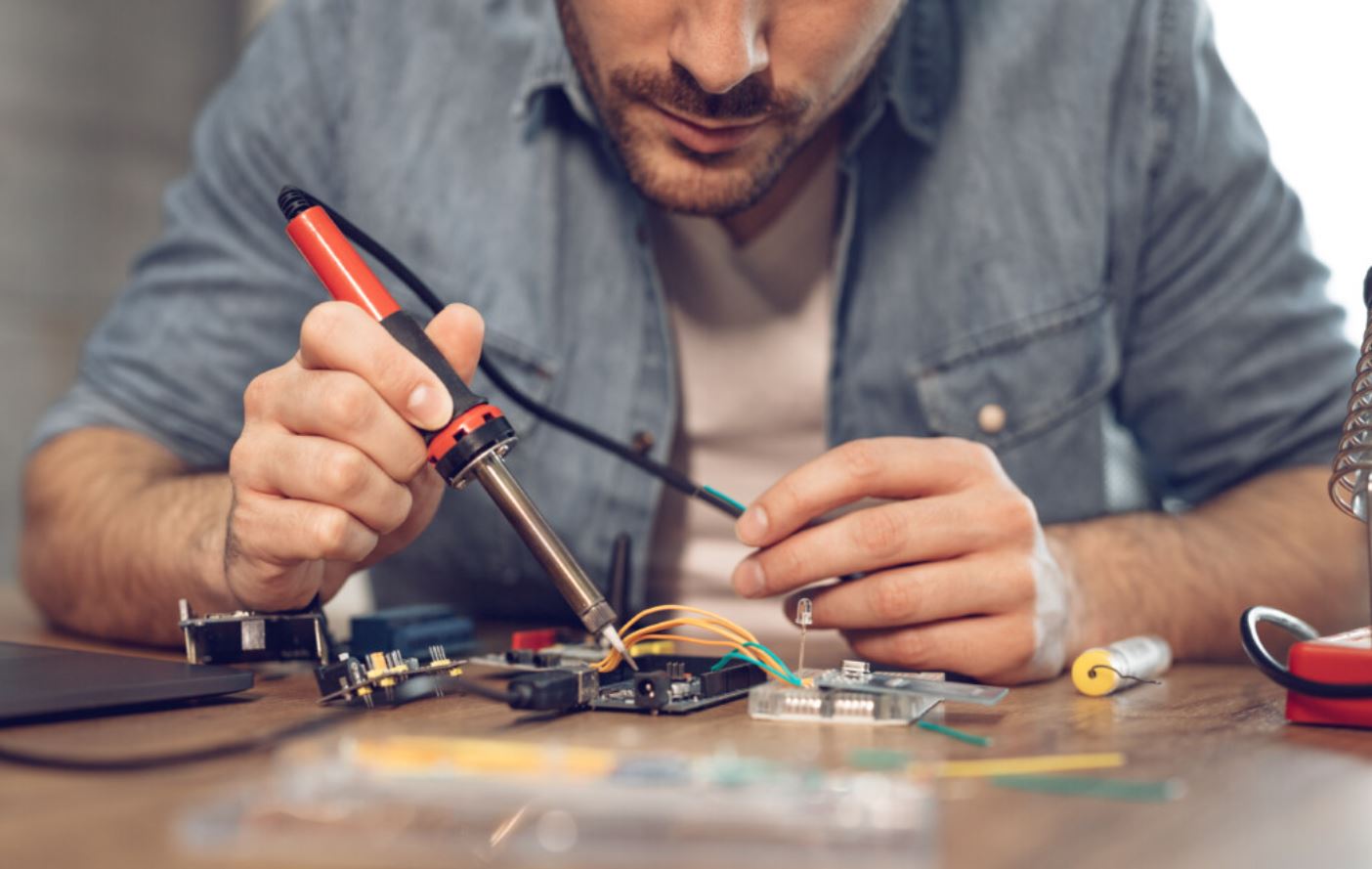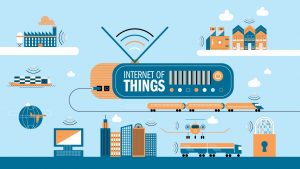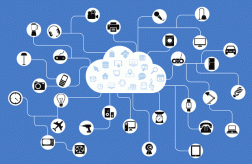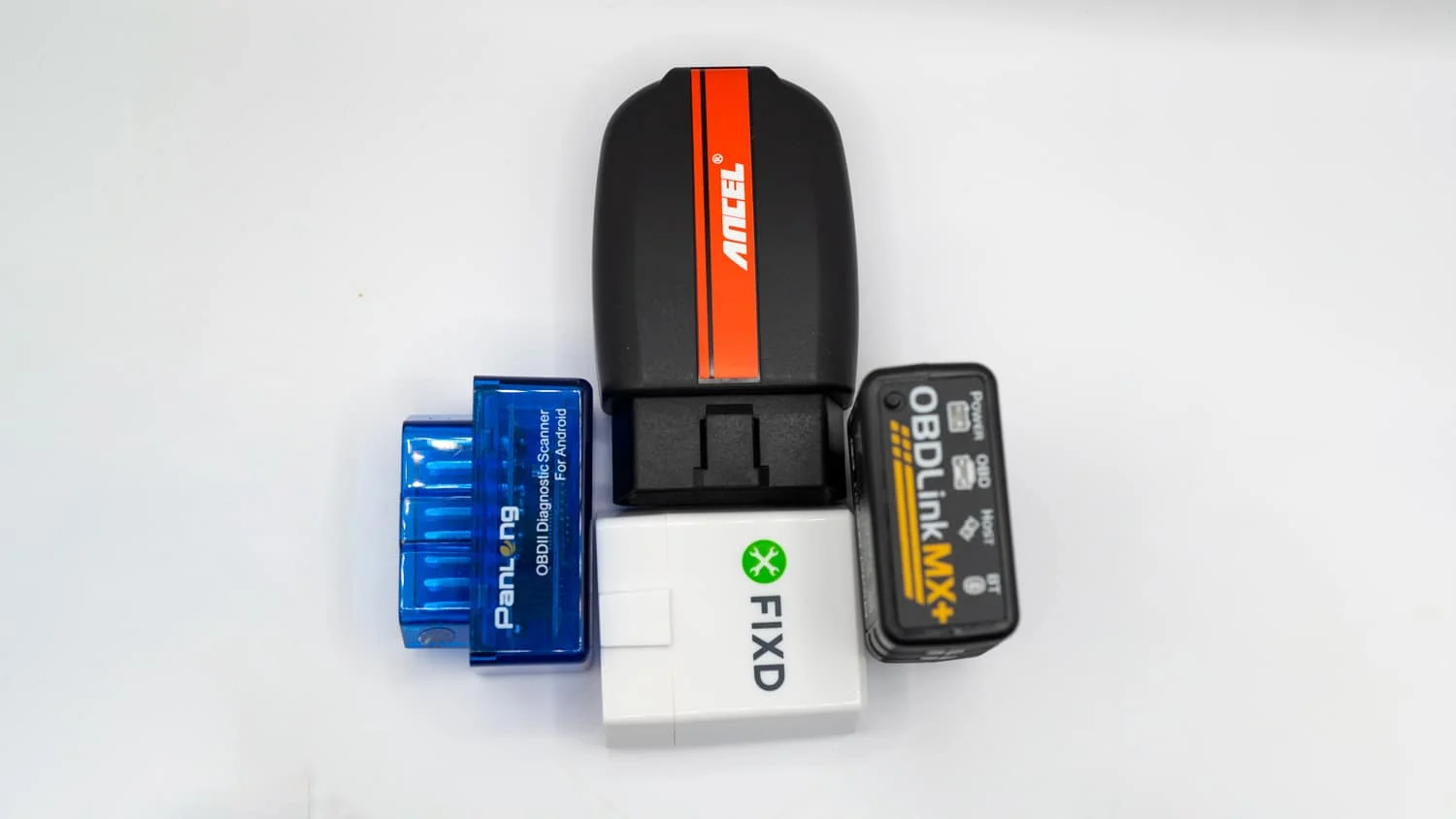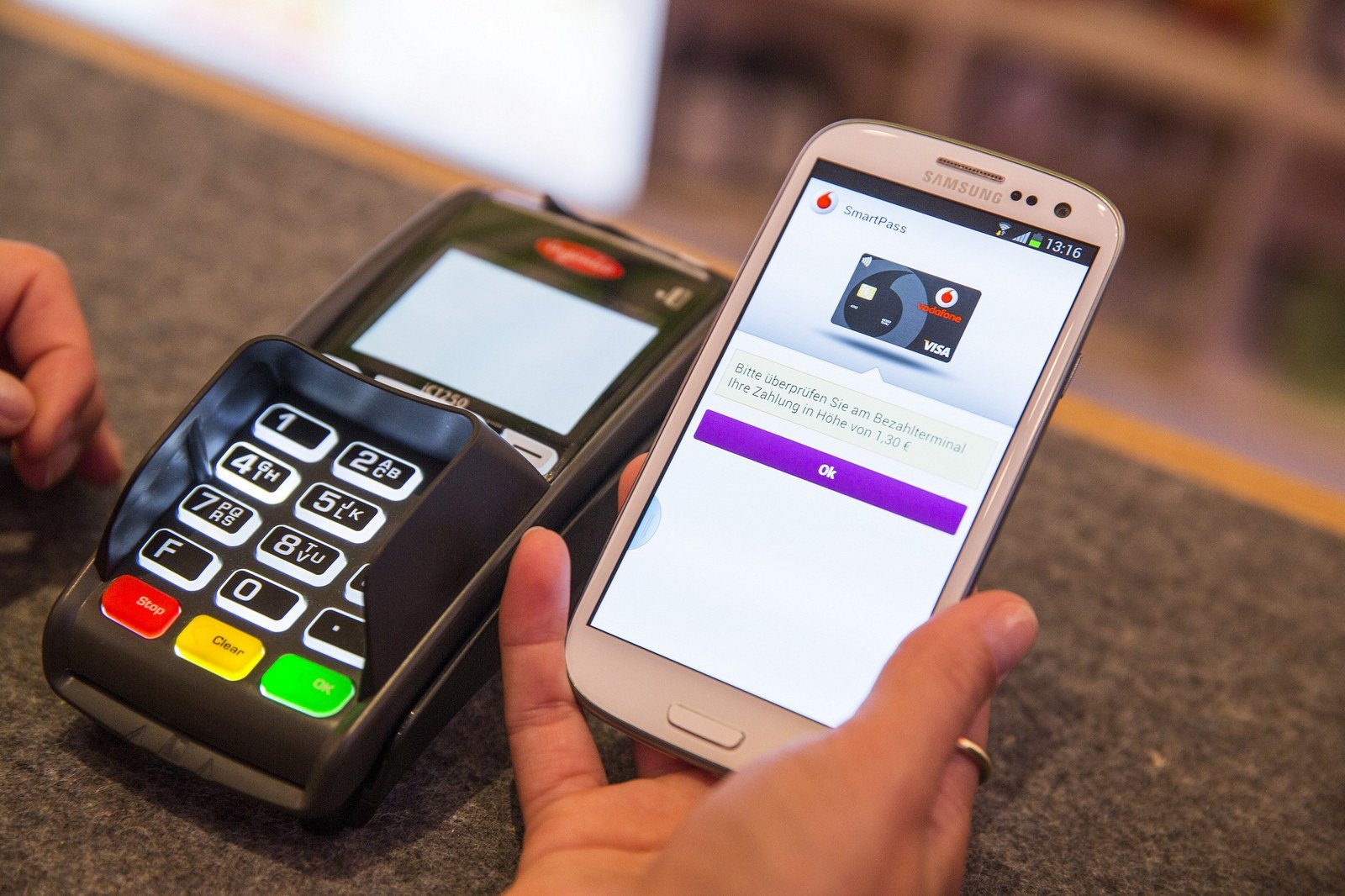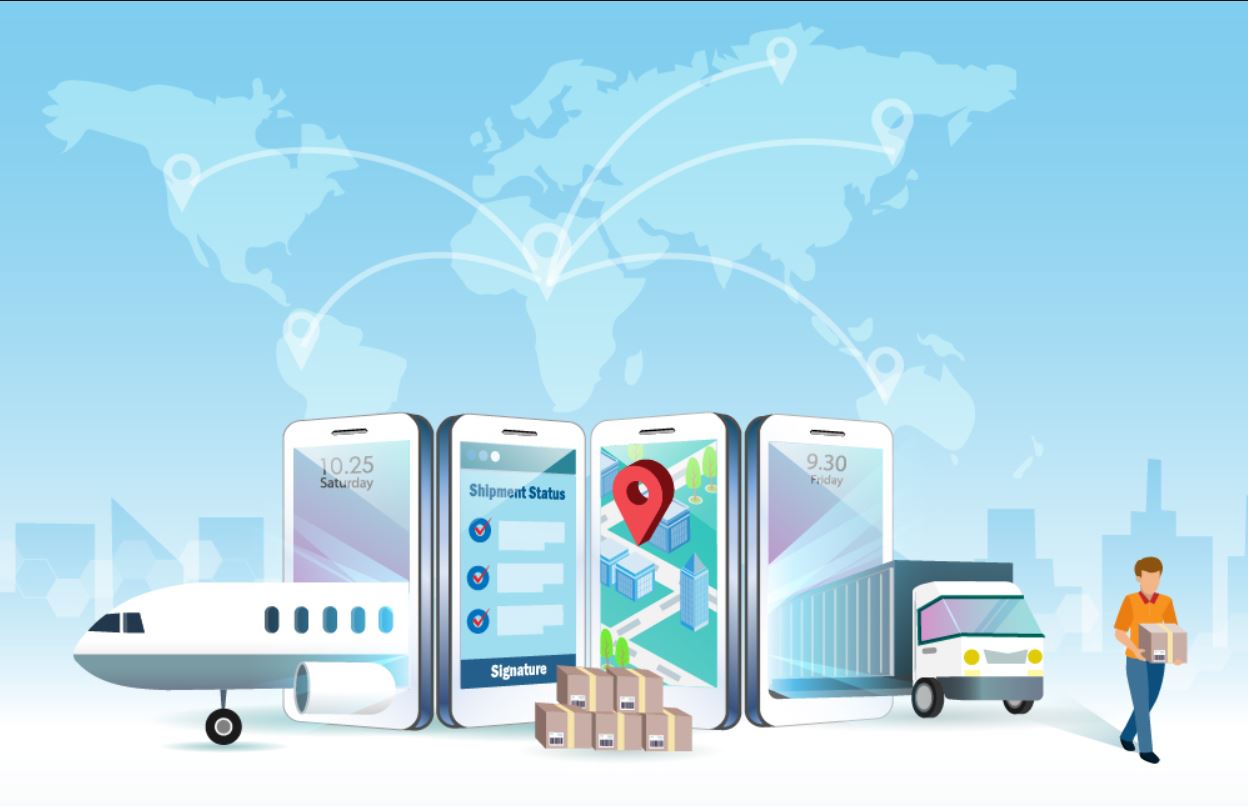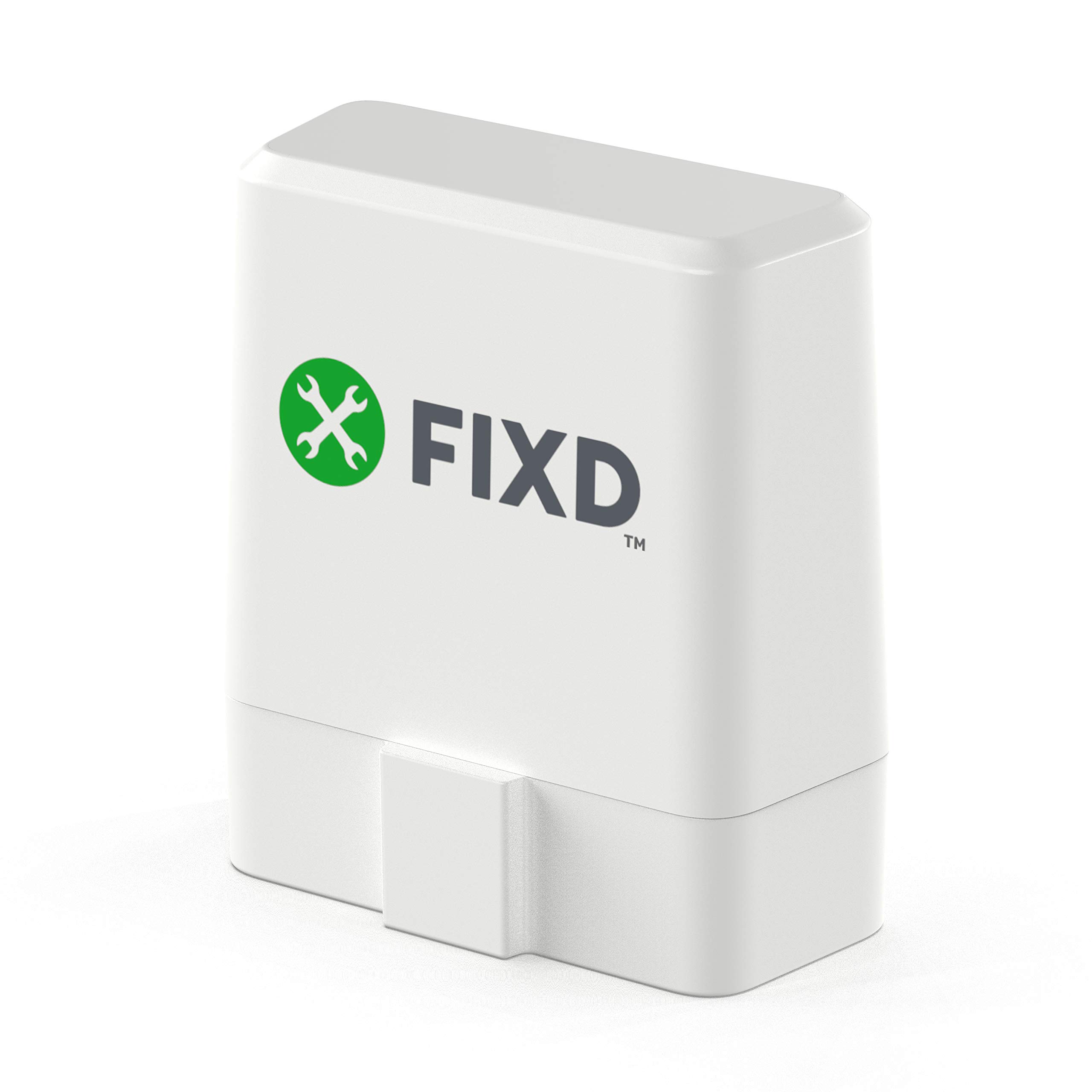Introduction
Welcome to the world of IoT engineering! With the rapid advancements in technology, the Internet of Things (IoT) has emerged as a transformative force, connecting various devices and enabling seamless communication between them. As an IoT engineer, you will be at the forefront of this revolution, developing innovative solutions that drive automation, efficiency, and connectivity across industries.
IoT engineering involves the design, development, and implementation of smart and interconnected systems that gather and analyze data to provide valuable insights. From smart cities and homes to wearable devices and industrial automation, the applications of IoT are vast and diverse.
In this article, we will explore the essential steps to becoming an IoT engineer, including the necessary education and skills, understanding IoT platforms and technologies, coding and programming, working with hardware and sensors, wireless communication, building IoT solutions, ensuring security, testing and debugging, and utilizing data analytics and visualization.
Whether you are a student exploring career options or a professional looking to transition into the exciting field of IoT engineering, this guide will provide you with valuable insights and a roadmap to navigate the intricacies of this rapidly evolving industry.
Getting started in IoT engineering
If you are interested in pursuing a career in IoT engineering, there are several steps you can take to kickstart your journey. Here’s a breakdown of what you need to do:
- Educational background: Start by obtaining a strong educational foundation. A bachelor’s degree in a relevant field such as computer science, electrical engineering, or information technology is typically preferred. Some universities even offer specialized IoT engineering programs.
- Develop programming skills: Mastering programming languages is crucial for IoT engineers. C, C++, Python, and Java are commonly used languages in IoT development. Familiarize yourself with these languages and gain hands-on experience through projects or internships.
- Study IoT platforms and technologies: Gain a comprehensive understanding of IoT platforms and technologies. Familiarize yourself with popular IoT platforms such as Arduino, Raspberry Pi, and ESP8266. Learn about protocols like MQTT and CoAP, cloud platforms like AWS and Azure, and wireless communication technologies like Wi-Fi, Bluetooth, and LoRa.
- Explore hardware and sensors: Familiarize yourself with hardware components and sensors used in IoT systems. Understand concepts like microcontrollers, sensors (temperature, humidity, motion, etc.), actuators, and circuit design. Practical experience with hardware projects will help you grasp the nuances of working with physical components.
- Wireless communication knowledge: IoT devices rely on wireless communication to connect and exchange data. Learn about different wireless protocols like Wi-Fi, Bluetooth, Zigbee, and cellular networks. Understand their strengths, limitations, and use cases to choose the right protocol for your IoT applications.
- Start building IoT solutions: Put your knowledge into practice by building small-scale IoT projects. Start with simple applications like home automation or environmental monitoring systems. This hands-on experience will help you understand the challenges involved in developing complete IoT solutions.
- Ensure security: Security is a critical aspect of IoT engineering. Learn about potential vulnerabilities, authentication mechanisms, and encryption techniques to safeguard IoT systems from cyber threats. Stay updated on the latest security practices and standards.
- Test and debug IoT systems: Developing IoT solutions involves rigorous testing and debugging. Learn about different testing methodologies and tools for IoT systems. Familiarize yourself with simulators, debuggers, and analysis tools to identify and rectify issues.
- Data analytics and visualization: Understanding how to process and analyze data collected by IoT devices is essential. Gain knowledge of data analytics techniques and tools. Explore data visualization methods to present insights in a user-friendly manner.
By following these steps, you can establish a strong foundation in IoT engineering and pave the way for an exciting and fulfilling career in this dynamic field.
Education and skills required
To excel in the field of IoT engineering, a combination of formal education and practical skills is necessary. Here are the key educational requirements and skills that will help you succeed:
Educational background: A bachelor’s degree in a relevant field such as computer science, electrical engineering, information technology, or electronics is typically preferred for IoT engineering roles. Some universities also offer specialized programs in IoT or related disciplines. A strong educational foundation will provide you with the necessary theoretical knowledge and understanding of core concepts in computing, electronics, and networking.
Programming skills: Proficiency in programming languages is crucial for IoT engineers. Languages such as C, C++, Python, and Java are commonly used in IoT development. You should be comfortable writing code, understanding algorithms, and debugging programs. Additionally, knowledge of scripting languages like JavaScript and familiarity with web development can be beneficial in developing IoT applications with web interfaces.
Understanding of IoT platforms and technologies: Familiarity with IoT platforms is essential. Explore popular IoT development platforms such as Arduino, Raspberry Pi, and ESP8266. Understand how these platforms function and their capabilities. Additionally, learn about IoT protocols like MQTT, CoAP, and HTTP, and cloud platforms such as AWS, Azure, and Google Cloud. Stay updated with the latest trends and advancements in IoT technologies to adapt to the rapidly evolving landscape.
Hardware and sensor knowledge: IoT systems involve the integration of hardware components and sensors. Gain knowledge of microcontrollers, circuit design, sensors (such as temperature, humidity, motion), and actuators. Understand how to connect and interface with these devices to collect and process data. Practical experience in working with hardware will help you tackle challenges in IoT system integration.
Wireless communication: IoT devices rely on wireless communication to connect and exchange data. Familiarize yourself with various wireless protocols such as Wi-Fi, Bluetooth, Zigbee, and cellular networks. Understand the advantages, limitations, and use cases of each protocol to select the appropriate wireless technology for your IoT applications. Additionally, knowledge of networking concepts like IP addressing, DNS, and routing will be beneficial.
Data analysis and visualization: IoT generates vast amounts of data. Understanding how to analyze and derive insights from this data is crucial. Familiarize yourself with data analytics techniques, tools, and algorithms. Learn how to process, clean, and transform IoT data for meaningful analysis. Additionally, explore data visualization methods to present the insights in a visually appealing and understandable manner.
Soft skills: In addition to technical skills, certain soft skills are essential for success in IoT engineering. These include problem-solving abilities, critical thinking, effective communication, teamwork, and adaptability. IoT projects often require collaboration with multidisciplinary teams, so the ability to work well in a team is crucial.
By obtaining the necessary education and developing these skills, you can position yourself as a competent and sought-after IoT engineer in this exciting and fast-growing field.
Understanding IoT platforms and technologies
In the world of IoT engineering, having a deep understanding of IoT platforms and technologies is crucial. Here, we will explore the key concepts and components of IoT platforms to provide you with a solid foundation in this area.
IoT Platforms: IoT platforms are software frameworks that enable the development, deployment, and management of IoT applications. They provide the necessary tools, libraries, and services to simplify the process of connecting and collecting data from IoT devices, processing and analyzing the data, and interacting with the devices.
Components of IoT platforms: Typical components of an IoT platform include:
- Connectivity: IoT platforms offer various connectivity options to connect and communicate with IoT devices. This includes support for wireless protocols such as Wi-Fi, Bluetooth, Zigbee, and cellular networks.
- Device management: IoT platforms provide features to manage and monitor connected devices. This includes device provisioning, firmware updates, remote configuration, and diagnostics.
- Data management: IoT platforms facilitate the collection, storage, and processing of data generated by IoT devices. They provide tools for data ingestion, transformation, and analysis, enabling users to derive valuable insights.
- Security: Security is a critical aspect of IoT platforms. They incorporate mechanisms such as data encryption, user authentication, and access control to ensure the privacy and integrity of IoT data and devices.
- Analytics and visualization: IoT platforms often include built-in analytics and visualization capabilities to enable users to gain insights from IoT data. They provide tools for real-time monitoring, data visualization, and predictive analytics.
- Integration: IoT platforms offer integration capabilities to connect with other systems and services. This allows users to seamlessly integrate IoT data into existing business applications, enabling cross-platform functionalities.
IoT Technologies: Alongside IoT platforms, understanding the underlying technologies in IoT engineering is essential. Here are some key technologies:
- Protocols: IoT devices use various protocols for communication. Examples include MQTT, which is lightweight and ideal for constrained devices, and CoAP, which is designed for resource-constrained networks.
- Cloud Computing: Cloud platforms like AWS (Amazon Web Services) and Azure provide scalable and cost-effective infrastructure for IoT applications. They offer services such as data storage, analytics, and machine learning, enabling seamless integration and management of IoT systems.
- Edge Computing: Edge computing brings processing power closer to the edge of the network, minimizing latency and improving response times. It allows for real-time analytics and decision-making at the edge devices themselves.
- Wireless Technologies: Wireless communication is at the heart of IoT. Familiarize yourself with Wi-Fi, Bluetooth, Zigbee, LoRa, and cellular networks, understanding their strengths, limitations, and use cases.
By gaining a comprehensive understanding of IoT platforms and technologies, you will be equipped to make informed decisions when choosing the right platforms and technologies for your IoT projects, ensuring efficient and secure development and deployment processes.
Coding and programming for IoT
When it comes to IoT engineering, coding and programming skills are essential for developing and deploying IoT applications. Let’s explore the key aspects of coding and programming in IoT.
Programming languages: Several programming languages are commonly used in IoT development. Here are a few languages frequently utilized:
- C: C is a widely used language in IoT due to its efficiency and low-level hardware access. Many microcontrollers used in IoT systems are programmed in C.
- C++: C++ is an extension of C and is often used for more complex IoT applications. It offers object-oriented programming features and is suitable for larger-scale projects.
- Python: Python is a popular language for IoT due to its readability, versatility, and vast array of libraries. It is often used for rapid prototyping and backend development.
- Java: Java is known for its platform independence and is widely used for building enterprise-level IoT solutions. It is particularly suited for gateway devices and cloud-based applications.
Embedded systems programming: IoT devices often operate on embedded systems, which are dedicated computer systems with specialized functions. Embedded systems programming involves writing code that runs on these devices. Understanding the hardware, memory limitations, and power constraints of the target device is crucial for efficient programming.
Sensor and actuator interfacing: IoT devices interact with the physical world through sensors and actuators. Programming skills are required to interface with different types of sensors (e.g., temperature, motion, humidity) and actuators (e.g., motors, LEDs). This includes reading sensor data, controlling actuators, and handling data interpretation and calibration.
Networking and communication: IoT devices need to communicate with each other and with the cloud or other systems. Programming skills are necessary for implementing communication protocols, such as MQTT or CoAP, and handling data exchange over different network technologies, including Wi-Fi, Bluetooth, and cellular networks.
Data processing and analysis: IoT generates vast amounts of data, and programming skills are essential for processing and analyzing this data. This includes data cleansing, aggregation, real-time analytics, and implementing machine learning algorithms for predictive analysis.
Security considerations: Programming plays a crucial role in ensuring the security of IoT applications. Understanding secure coding practices, implementing encryption algorithms, and incorporating authentication mechanisms are essential for protecting sensitive data and preventing unauthorized access.
Frameworks and libraries: Take advantage of IoT-specific frameworks and libraries to streamline your development process. These frameworks provide pre-built modules for common IoT functionalities and enable faster prototyping and development.
By honing your coding and programming skills, familiarizing yourself with IoT-specific languages, and understanding the intricacies of embedded systems, networking, and data processing, you will be well-equipped to develop robust and efficient IoT applications.
Hardware and sensors in IoT
In the world of IoT engineering, hardware components and sensors play a vital role in enabling devices to interact with the physical world and collect essential data. Let’s delve into the key aspects of hardware and sensors in IoT.
Microcontrollers and IoT platforms: Microcontrollers are at the heart of many IoT devices. These small, low-power integrated circuits serve as the brain of the device, enabling control and data processing. Popular microcontrollers used in IoT projects include Arduino, Raspberry Pi, and ESP8266. These platforms provide a wide range of functionalities, including digital and analog input/output (I/O) pins, communication interfaces, and programmability.
Sensors: Sensors are essential components that allow IoT devices to sense, measure, and collect data from the surrounding environment. There is a wide variety of sensors available, catering to different needs and applications. Some commonly used sensors in IoT include:
- Temperature sensors: These sensors measure ambient temperature, enabling temperature monitoring and control in applications such as weather stations, HVAC systems, and agriculture.
- Humidity sensors: Humidity sensors measure the moisture content in the air. They are used in applications such as indoor climate control, greenhouse monitoring, and industrial processes.
- Proximity sensors: Proximity sensors detect the presence or absence of nearby objects without physical contact. They are used in applications like automated lighting, touchless interfaces, and smart security systems.
- Motion sensors: Motion sensors detect movement or changes in position. They are commonly used in applications such as burglar alarms, occupancy detection, and gesture-controlled devices.
- Light sensors: Light sensors detect the intensity or presence of light. They are used in applications such as street lighting control, outdoor weather monitoring, and smart energy management.
- Gas sensors: Gas sensors detect the presence and concentration of various gases. They are used in applications such as air quality monitoring, industrial safety, and gas leak detection.
Actuators: Actuators are devices that convert electrical signals into physical action. They enable IoT devices to interact with the physical world. Common types of actuators used in IoT include motors, valves, servos, and LEDs. Actuators are utilized in applications such as home automation, robotics, and industrial control systems.
Circuit design and prototyping: Understanding circuit design principles is crucial for hardware implementation in IoT projects. Familiarize yourself with circuit design tools such as schematics, breadboards, and printed circuit boards (PCBs). Prototyping platforms like Arduino and Raspberry Pi provide a user-friendly environment to experiment with different circuits and components.
Power considerations: Power management is a critical aspect of IoT devices, especially those deployed in remote or energy-constrained environments. Knowledge of power-efficient design practices, low-power modes, and battery technologies is necessary to ensure optimal power usage and prolonged device operation.
By gaining a solid understanding of hardware components, choosing appropriate sensors and actuators for your IoT applications, and acquiring circuit design and prototyping skills, you can develop innovative and functional IoT devices that effectively interact with the physical world.
Wireless communication in IoT
Wireless communication is a critical aspect of IoT engineering, enabling devices to connect, communicate, and exchange data seamlessly. Let’s delve into the key elements of wireless communication in IoT.
Wireless protocols: There are various wireless protocols used in IoT, each with its own advantages and limitations. Some commonly used wireless protocols in IoT include:
- Wi-Fi: Wi-Fi is a widely adopted wireless communication technology that provides high-speed data transfer over short to medium distances. It is suitable for applications where power consumption is not a major concern, such as home automation, smart offices, and enterprise IoT solutions.
- Bluetooth: Bluetooth is a wireless technology designed for short-range communication between devices. It is commonly used in applications like wearable devices, healthcare monitoring, and home entertainment systems.
- Zigbee: Zigbee is a low-power, low-data-rate wireless protocol that is commonly used in applications where devices need to communicate over longer distances or in environments with a high concentration of IoT devices. Examples include home automation, industrial automation, and smart energy management.
- LoRa: LoRa (Low Power Wide Area Network) is a long-range, low-power wireless communication protocol that allows for communication over large distances while conserving battery life. It is suitable for applications such as agriculture, asset tracking, and smart city infrastructure.
- Cellular networks: Cellular networks, such as 4G LTE and 5G, provide wide coverage and reliable connectivity. They are used in IoT applications that require ubiquitous connectivity, such as fleet management, smart utilities, and connected vehicles.
Gateway devices: Gateway devices act as intermediaries between IoT devices and cloud services. They provide the necessary bridge between different wireless protocols and handle data aggregation, protocol translation, and connectivity management. Gateway devices are essential in scenarios where multiple IoT devices with different wireless technologies need to be connected and unified.
Mesh networks: Mesh networks are a type of wireless network where each device can transmit, receive, and relay data, creating a network with multiple communication paths. This distributed network topology increases network robustness and enables more extensive coverage. Mesh networks are commonly used in applications like smart home systems, industrial monitoring, and outdoor sensor networks.
Network security: Ensuring the security and integrity of wireless communication in IoT is crucial. Implementing encryption mechanisms (such as SSL/TLS), device authentication, and secure data transmission protocols (like HTTPS) are essential to protect IoT systems from unauthorized access and data breaches.
Wireless range and signal strength: The range and signal strength of wireless communication can vary based on factors such as transmission power, antenna design, environmental conditions, and interference. It is important to consider these factors when designing and deploying IoT systems to ensure reliable communication between devices.
Interoperability: With the proliferation of various wireless protocols, ensuring interoperability between different devices and systems is paramount. Standardization efforts, such as IoT protocols and frameworks, promote compatibility and seamless integration between IoT devices from different manufacturers.
By understanding the fundamentals of wireless communication technologies, selecting the appropriate wireless protocol for your IoT application, ensuring network security, and considering factors such as range, signal strength, and interoperability, you can establish robust and reliable wireless communication in your IoT systems.
Building and designing IoT solutions
Building and designing IoT solutions requires careful planning, integration of hardware and software components, and considering various factors to ensure seamless functionality and optimal performance. Let’s explore the key aspects involved in building and designing IoT solutions.
Identifying use cases and requirements: Begin by identifying the specific use cases and requirements for your IoT solution. Understand the problem you are trying to solve, the goals you want to achieve, and the user needs and expectations. This will serve as a foundation for the design and development process.
Architecture and system design: Create a well-thought-out architecture and system design for your IoT solution. Consider the hardware and software components, data flows, communication protocols, and integration points. Determine whether a centralized architecture, where data is processed in the cloud, or a decentralized architecture, where data processing happens at the edge devices, is more suitable for your application.
Data collection and management: Determine how you will collect and manage the data generated by your IoT devices. Define the data types, frequency of collection, and storage requirements. Consider using a data management platform or cloud services to handle data ingestion, storage, and retrieval efficiently.
User interface and interaction: Design a user-friendly interface for interacting with your IoT solution. This can be a web-based dashboard, mobile application, or voice-controlled interface. Consider the usability, accessibility, and visual presentation to ensure a seamless user experience.
Integration and interoperability: Ensure interoperability by designing your IoT solution to work seamlessly with a wide range of devices, platforms, and technologies. Follow industry standards and protocols to enable easy integration with existing systems and future scalability.
Security considerations: Security is a crucial aspect of IoT solutions. Implement security measures like data encryption, access control, and secure communication protocols. Regularly update firmware and patches to protect against vulnerabilities. Implement strong authentication mechanisms to prevent unauthorized access to IoT devices and networks.
Scalability and flexibility: Design your IoT solution to be scalable and flexible. Consider the potential growth and expansion of your solution and ensure that it can accommodate an increasing number of devices and handle growing data volumes. Implement modular and flexible architectures that allow for easy addition or replacement of components.
Testing and quality assurance: Thoroughly test your IoT solution to ensure its reliability and functionality. Conduct unit testing, integration testing, and system testing to identify and rectify any issues or errors. Validate the performance, security, and usability of your solution to deliver a high-quality product.
Regulatory compliance: Ensure that your IoT solution complies with relevant regulations and standards. Understand and adhere to privacy regulations, data protection laws, and industry-specific requirements. Consider aspects like data ownership, data retention, and user consent.
By carefully considering these aspects and following best practices in building and designing IoT solutions, you can create robust, secure, and scalable solutions that meet the needs of your users and deliver value in the ever-expanding IoT landscape.
Security in IoT
Security is a critical aspect of IoT engineering, as IoT devices are often interconnected and handle sensitive data. Protecting against potential security threats is essential to safeguard privacy, prevent unauthorized access, and ensure the integrity of IoT systems. Let’s explore the key considerations for security in IoT.
Device authentication: Implement strong device authentication mechanisms to ensure that only authorized devices can access the IoT network. This can include using secure protocols, certificates, or unique identifiers for device authentication.
Data encryption: Encrypting data as it is transmitted or stored is vital for maintaining data confidentiality. Utilize encryption algorithms to protect sensitive data from being intercepted or accessed by unauthorized individuals.
Secure communication protocols: Choose secure communication protocols, such as HTTPS or MQTT with Transport Layer Security (TLS), to ensure the confidentiality and integrity of data transmitted between IoT devices and cloud platforms. Secure protocols prevent eavesdropping and tampering with data during transmission.
Access control: Implement access control mechanisms to restrict unauthorized access to IoT devices and systems. Role-based access control (RBAC), strong passwords, and user management systems help prevent unauthorized individuals from manipulating or accessing IoT devices and data.
Firmware and software updates: Keep IoT devices and software up to date with the latest security patches and firmware updates. Regularly update and patch devices to address vulnerabilities and ensure they are equipped with the latest security measures.
Secure storage: Ensure that sensitive data collected by IoT devices is stored securely. This includes using encryption for data at rest and safe storage practices to prevent unauthorized access or data breaches.
Physical security: Physical security measures are as important as digital security. Protect IoT devices from physical tampering or theft. Deploy physical security measures like secure enclosures, tamper-resistant hardware, and surveillance systems to safeguard devices.
User awareness and training: Educate users about best security practices and potential risks associated with IoT devices. Promote password hygiene, caution against sharing sensitive information, and provide guidance on recognizing and reporting potential security threats.
Privacy considerations: Privacy is a significant concern in IoT as devices collect vast amounts of personal data. Ensure that privacy regulations and policies are adhered to. Implement measures such as data anonymization, data minimization, and user consent mechanisms.
Vulnerability testing and monitoring: Regularly perform vulnerability testing and penetration testing to identify and address any vulnerabilities in IoT systems. Implement monitoring solutions to detect and respond to security breaches in real-time.
Regulatory compliance: Ensure compliance with relevant regulations and industry standards, such as the General Data Protection Regulation (GDPR) or specific industry requirements. Understand and comply with data protection laws, privacy regulations, and other legal obligations.
By incorporating these security considerations into the design, development, and deployment of IoT systems, you can create robust and secure IoT solutions that protect data, preserve privacy, and minimize the risk of security breaches.
Testing and debugging IoT systems
Testing and debugging play crucial roles in the development of IoT systems, ensuring their functionality, quality, and reliability. As IoT systems can be complex and involve various components, thorough testing is essential to identify and rectify any issues. Let’s explore the key aspects of testing and debugging IoT systems.
Unit testing: Perform unit testing to test individual components and functionalities of the IoT system. This involves testing each unit of code or module in isolation to ensure its proper functionality. Unit tests help identify and fix any errors or bugs at an early stage.
Integration testing: Integration testing verifies the proper interaction and communication between different components of the IoT system. It ensures that the components work together as intended and that data flows correctly between different modules, devices, or platforms.
System testing: Conduct system-level testing to validate the overall functionality and performance of the IoT system. This involves testing the system as a whole, simulating real-world scenarios and usage patterns. System tests verify the system’s compliance with specified requirements and uncover any issues or inconsistencies.
End-to-end testing: End-to-end testing evaluates the entire IoT system’s functionality, including the interaction with external systems or devices. It focuses on validating the complete workflow and user experience, ensuring that data collection, processing, and reporting work seamlessly across the system’s different components.
Performance testing: Conduct performance testing to assess the responsiveness, scalability, and resource utilization of the IoT system. This involves analyzing factors such as response times, throughput, and system stability under different loads and stress conditions. Performance testing helps optimize the system’s performance and identify potential bottlenecks.
Security testing: Test the IoT system for potential security vulnerabilities and weaknesses. This includes assessing the system’s resistance to unauthorized access, data breaches, and attacks. Security testing employs techniques such as penetration testing, vulnerability assessments, and code reviews to identify and address security-related issues.
Real-world testing: Perform testing in real-world conditions to assess the IoT system’s behavior and functionality in various environments, including different locations, network conditions, and system configurations. Real-world testing helps identify and resolve issues that may arise in practical deployments.
Debugging: Debugging is an essential process in identifying and fixing issues in the IoT system’s code and functionality. Use debugging tools and techniques to trace and isolate errors or bugs. Analyze logs, error messages, and data outputs to identify the root cause of issues and apply appropriate fixes.
Continuous testing: Implement continuous testing practices to integrate testing throughout the development process. Continuously test individual components, perform automated tests, and conduct regression testing to ensure that changes or updates do not introduce new issues or regressions.
Documentation and reporting: Maintain comprehensive documentation of testing processes, test cases, and results. Report and track issues, ensuring that they are properly prioritized, assigned, and resolved. Documentation serves as a reference for future improvements and helps maintain system stability.
By incorporating comprehensive testing practices, utilizing debugging techniques, and ensuring continuous testing throughout the development process, you can identify and resolve issues, validate system functionality, and deliver reliable and high-quality IoT systems.
Data analytics and visualization in IoT
Data generated by IoT devices holds immense potential for extracting valuable insights and driving informed decision-making. Data analytics and visualization techniques play a crucial role in transforming raw IoT data into meaningful information. Let’s explore the key aspects of data analytics and visualization in IoT.
Data preprocessing: Before performing analytics, preprocess the raw IoT data. This involves tasks such as data cleaning, filtering, and transformation. Removing outliers, handling missing values, and normalizing data are common preprocessing steps.
Descriptive analytics: Descriptive analytics focuses on summarizing and understanding historical IoT data. It involves techniques such as aggregation, statistical analysis, and visualization to identify patterns, trends, and anomalies in the data. Descriptive analytics provides a foundation for further analysis.
Diagnostic analytics: Diagnostic analytics involves exploring the causes and reasons behind specific events or behaviors observed in IoT data. It aims to answer “why” questions by analyzing historical data and contextual information. Diagnostic analytics aids in identifying relationships, dependencies, and correlations among different variables.
Predictive analytics: Predictive analytics utilizes historical IoT data to forecast future events or outcomes. By employing techniques such as machine learning algorithms, predictive analytics helps anticipate patterns, anomalies, and trends in IoT data. This enables proactive decision-making and early identification of potential issues.
Prescriptive analytics: Prescriptive analytics focuses on recommending optimal strategies or actions based on IoT data analysis. By combining historical data, real-time information, and domain knowledge, prescriptive analytics provides actionable insights and suggestions to enhance performance, efficiency, and decision-making in IoT systems.
Data visualization: Data visualization techniques are crucial for presenting complex IoT data in a visually appealing and easy-to-understand format. Charts, graphs, maps, and interactive dashboards are used to represent IoT data visually. Visualization helps stakeholders gain insights at a glance, make data-driven decisions, and spot patterns or outliers in the data.
Real-time analytics: Real-time analytics in IoT involves analyzing data as it is generated in real-time. This requires processing and analyzing data immediately, often leveraging stream processing technologies. Real-time analytics enables instant detection of anomalies, quick response to events, and rapid decision-making based on up-to-date information.
Edge analytics: Edge analytics refers to performing data analytics directly on IoT devices or at the edge of the network, rather than transmitting all data to the cloud for processing. This approach reduces latency, conserves network bandwidth, and enables real-time insights and actions at the device level.
Data-driven decision-making: Utilize the insights derived from data analytics to make informed decisions in IoT systems. Combine data analysis results with domain knowledge and context to drive decisions that enhance efficiency, improve operations, and enable innovative solutions.
Privacy and security: Ensure privacy and security during data analytics and visualization by implementing appropriate measures. Anonymize sensitive data, encrypt data during transmission, and apply access controls to protect against unauthorized access and data breaches.
By leveraging data analytics and visualization techniques, IoT systems can unlock the full potential of their data, transform it into actionable insights, and drive data-driven decision-making for improved efficiency, enhanced operations, and innovative solutions.
Career opportunities in IoT engineering
The growing adoption of IoT technology across industries has created a wide range of career opportunities for professionals in the field of IoT engineering. Let’s explore some of the exciting career paths and roles available in the realm of IoT.
IoT Engineer: As an IoT engineer, you will be responsible for designing, developing, and implementing IoT solutions. This includes working with hardware components, sensors, connectivity protocols, and cloud platforms to create interconnected systems that collect, analyze, and act upon data.
IoT Architect: IoT architects design the overall architecture and framework for IoT systems. They assess requirements, plan connectivity, select appropriate hardware and software components, and ensure scalability, security, and interoperability of the IoT infrastructure.
Data Scientist: Data scientists in the IoT domain focus on analyzing and extracting insights from the massive amounts of data generated by IoT devices. They utilize statistical and machine learning techniques to uncover patterns, trends, and anomalies that help improve decision-making and optimize IoT systems.
Security Analyst: As security threats loom over IoT systems, security analysts work on safeguarding networks, devices, and data. They assess vulnerabilities, implement security measures, monitor network traffic, and respond to security incidents to protect IoT systems from cyber threats.
Embedded Systems Engineer: Embedded systems engineers focus on developing the firmware and software that runs on IoT devices. They work closely with hardware engineers to ensure seamless integration, optimize performance, and address low-power requirements in resource-constrained IoT environments.
IoT Product Manager: IoT product managers oversee the development and launch of IoT products and solutions. They define product requirements, conduct market research, guide the development process, and ensure that the resulting product aligns with customer needs and market trends.
Cloud Solutions Architect: Cloud solutions architects specialize in designing and implementing cloud-based architectures for IoT systems. They leverage cloud platforms and services to enable data storage, processing, and analysis at scale, and ensure seamless integration with IoT devices and applications.
IoT Consultant: IoT consultants provide expert guidance to organizations in leveraging IoT technologies. They assess business requirements, identify IoT opportunities, develop strategies, and guide organizations in implementing IoT solutions to drive innovation, efficiency, and competitive advantage.
Industrial IoT Specialist: Industrial IoT specialists focus on applying IoT technologies to industrial settings, such as manufacturing, logistics, and energy. They implement IoT solutions that optimize operational efficiency, enable predictive maintenance, and facilitate real-time monitoring and control of industrial processes.
IoT Researcher: IoT researchers explore cutting-edge technologies, develop new algorithms, and contribute to advancements in the field. They work in academia, research institutions, or industry research labs, pushing the boundaries of IoT technology and driving innovation.
These are just a few examples of the numerous career opportunities within IoT engineering. With IoT adoption expanding across industries, skilled professionals have the opportunity to contribute to the development and deployment of innovative solutions that transform how we interact with technology and the world around us.
Conclusion
The field of IoT engineering offers tremendous opportunities for professionals looking to be at the forefront of technological advancements. From designing interconnected systems to analyzing vast amounts of data, IoT engineers play a crucial role in shaping the future of automation, connectivity, and data-driven decision-making.
To embark on a successful career in IoT engineering, acquiring the necessary education and skills is vital. A strong foundational knowledge in computer science, electrical engineering, or a related field serves as the backbone for understanding the complexities of IoT systems. Proficiency in programming languages, familiarity with IoT platforms and technologies, and expertise in hardware and sensors are essential for developing robust and efficient IoT solutions.
Security and privacy are top priorities in IoT engineering. Protecting IoT devices, networks, and data from external threats requires implementing advanced security measures and staying updated on the latest security practices. Additionally, ensuring compliance with privacy regulations and adhering to ethical data handling practices are integral to maintaining user trust in IoT systems.
Data analytics and visualization are critical components of IoT engineering, enabling the extraction of meaningful insights from the vast amount of data generated by IoT devices. By employing analysis techniques, visualizing data, and utilizing predictive and prescriptive analytics, IoT professionals can further enhance decision-making, optimize performance, and drive innovation.
The field of IoT engineering offers an array of career opportunities. Roles such as IoT engineer, architect, data scientist, and security analyst are in high demand as organizations across industries recognize the transformative potential of IoT. With specialization in areas like embedded systems, cloud computing, or industrial IoT, professionals can carve out unique career paths that align with their interests and expertise.
In conclusion, IoT engineering is an exciting and rapidly evolving field that presents professionals with immense potential for growth and contribution. As technology continues to advance and more devices become interconnected, skilled IoT engineers will continue to be in demand, playing a vital role in shaping the future of connectivity, automation, and data-driven innovation.







